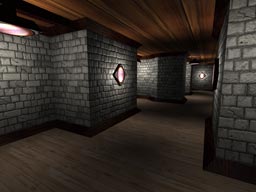It's demo time again! 

It's another deferred shading demo, but this time with multisample support. I'm using a stencil mask to separate edge pixels from interior pixels so that I only need to compute the lighting for all samples on edge pixel, and I can use a single sample for most pixels, much like multisampling using traditional forward shading.
F5 - Default mode 2 pass mode
F6 - Evaluate all samples always (essentially supersampling)
F7 - Evaluate a single sample always (resulting in no antialiasing)
F8 - Visualize the stencil mask
http://www.humus.name/


It's another deferred shading demo, but this time with multisample support. I'm using a stencil mask to separate edge pixels from interior pixels so that I only need to compute the lighting for all samples on edge pixel, and I can use a single sample for most pixels, much like multisampling using traditional forward shading.
F5 - Default mode 2 pass mode
F6 - Evaluate all samples always (essentially supersampling)
F7 - Evaluate a single sample always (resulting in no antialiasing)
F8 - Visualize the stencil mask
http://www.humus.name/

